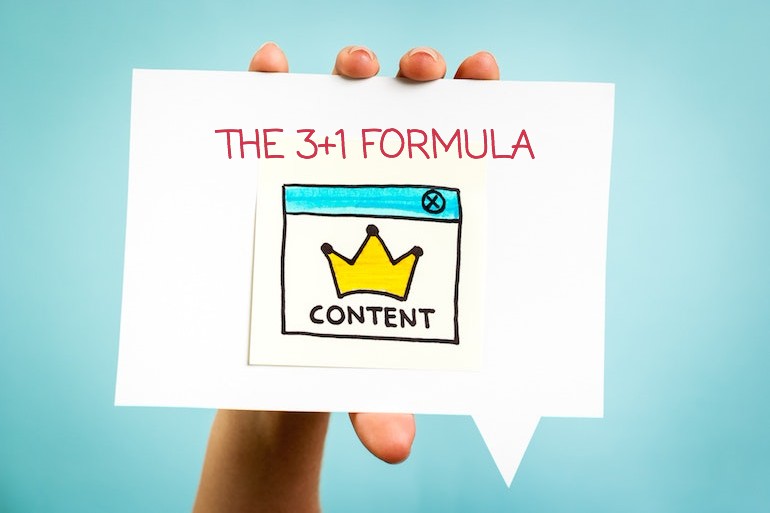By Alex Ionides, managing director of Silx

Alex Ionides, Managing Director of Silx
This article focuses on what I call the ‘3+1’ pillars of content marketing, which we use for our client strategy and content framework. This kind of architecture enables us to see how every element fits in and contributes to the success of the whole campaign.
Many people are needed to carry out a full content marketing campaign, but even smaller outfits can use this kind of architecture to prioritize their efforts and match them realistically to the resources that are available.
Pillar 1: Content creation
The most important element of content marketing is to create content that is relevant and high quality every time.
Relevant content means presenting information that helps or benefits your audience in the same way your products or services help or benefit them. High quality means well-written articles or videos or podcasts with extremely high production quality. Mediocre content conveys that your products or services are mediocre. If your content is shallow or unfocused, you are damaging your company’s image.
Stay close to your corporate messaging and positioning, not promotional messaging but what your company stands for – its personality. This is what you want to reflect in the tone of your content.
Define your SEO strategy. Do you want your writers to pay attention to SEO rankings with a strong emphasis on relevant keywords? Or to avoid setting rules so you don’t affect the quality of the final product? SEO is a complex effort in its own right and deserves its own comprehensive strategy. Use monitoring tools such as Twitter lists to gain business intelligence and join in industry conversations. Use brainstorming techniques to generate content ideas: your personal knowledge of your audience and industry is a great starting point but won’t always hit the mark.
MUST READ: In the wake of the Iran crash, we look at how to manage airline crisis communications
Build out your content team and workflow structure. You’ll need a strong writing team: build steadily without rushing it, using in-house resources and external support. You’ll also need a project management framework, including a content calendar, brief creation and content guidelines, and file management, editing and final content signoff processes.
Pillar 2: Content distribution
Content creation is our most important pillar, but content distribution also involves many different decisions and touch points, once you’ve decided which channels to focus on, with a view to increasing your numbers in the right demographics.
Content needs to be distributed frequently, more than once every week or two. Infrequent publishing means you are not contributing regularly enough to the conversation to keep people coming back for more.
Social media pages are a good distribution channel as long as you engage properly and do more than simply post. Develop a strategy for each social network, and consider paid social and search services as they are highly targeted and can help you grow an audience that fits your demographic profile.
UPCOMING: What’s different at STEP 2018
Email is now redeeming itself in the new era of quality informational content (i.e. void of promotional ugliness). Supported by high quality, relevant content, email is your friend, and a well-managed list can be your most powerful distribution channel.
Content marketing is helping to blur the lines between PR and digital marketing. The media – including both traditional press and online presences, such as bloggers with a significant following in your demographic – can help open doors to a bigger audience. But to reach it you have to offer something of value to that audience, not your own products or services.
Pillar 3: Measurement and goals
When it comes to business, ‘What gets measured gets done.’ Below, very briefly, are some of the key metrics that guide our efforts.
View and click measures are valuable, as are measures of time spent. How long do people stick around and are they really engaging or did they just open the page and quickly move on? Tools are available to monitor engagement, traffic sources, subscriber and follower analytics, and backlinks. Keyword reviews, meanwhile, give you relevant keywords to work into your content and overall SEO efforts and are a great way to get ideas for future content.
READ: Get excited cause there’s a nap truck in town
The essential tool for sales is to track leads and customer conversions. But once up and running you will also want to be tracking cost per lead and cost per conversion.
Pillar ‘+1’: Marketing-to-sales integration
In a sense, it is woven through the entire content architecture, but having a strong connection back to sales is our ‘+ 1’ pillar, helping steer the content based directly on sales results. Nothing should be done without knowing what impact it has on sales.
Climbing that mountain. Content marketing is a big mountain to climb and more complicated than traditional marketing. These pillars are just a rough guide. But budgets are shifting its way – in North America, content marketing spend among B2B companies is already 28 percent of the overall marketing budget and rising fast.
Appreciating the scale of the task will help you set realistic goals toward reaching the summit.





